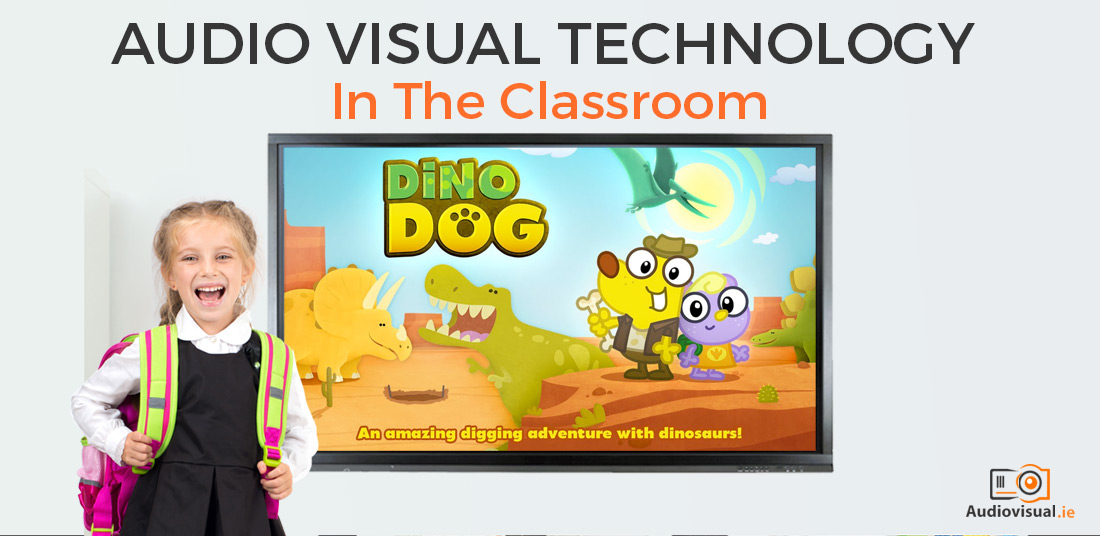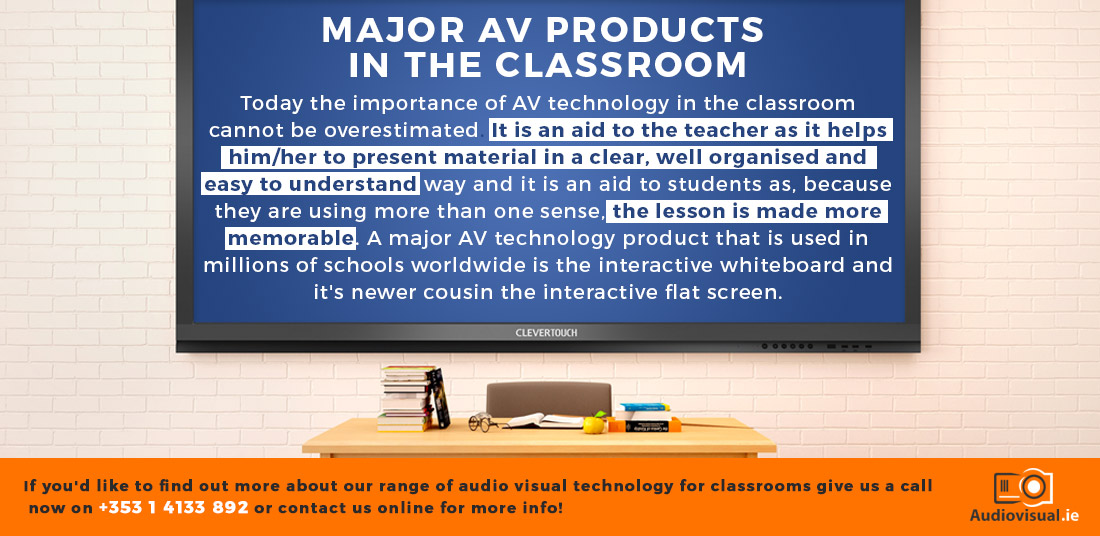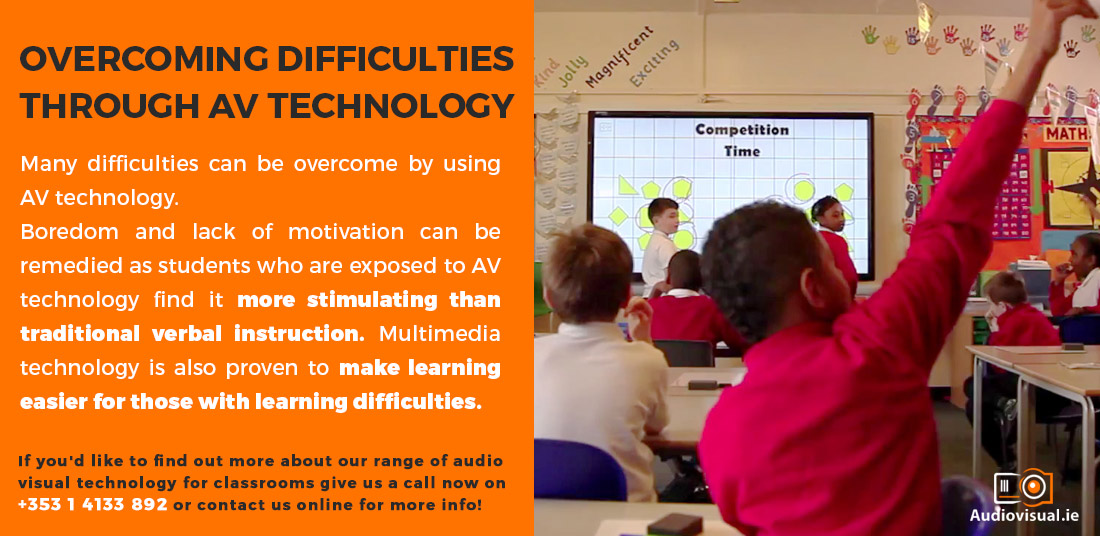
08 Feb Audio Visual Technology In The Classroom
Audio Visual technology benefits schools in two major ways: learning is improved via a more interactive and stimulating experience for the pupil and, as we live in a multimedia age, employment prospects are vastly improved.
Learning That Involves Visual Aids Is More Successful
It is a fact that children learn by observing adults. Therefore, learning that involves visual aids is more likely to be successful. This kind of learning can be traced back to the 17th century Bohemian educator, John Amos Comenius, whose book, Orbis Sensualium Pictus, was published with 150 drawings of everyday life. During World War II, visual aids proved highly successful in the instruction of soldiers in the US armed forces.
A Major AV Product Is The Interactive White Board
Today the importance of AV technology in the classroom cannot be overestimated. It is an aid to the teacher as it helps him/her to present material in a clear, well organised and easy to understand way and it is an aid to students as, because they are using more than one sense, the lesson is made more memorable. A major AV technology product that is used in millions of schools worldwide is the interactive whiteboard and it’s newer cousin the interactive flat screen. These products allow easy integration of materials into a lesson such as pictures and the teacher’s notes. In this way, the presentation is improved and learners absorb information more easily. Interactive whiteboards help to foster a more collaborative environment and, by freeing up the learner from taking notes, they facilitate group discussions.

Overcoming Difficulties Through AV Technology
Other audio visual technologies that are finding their way into the classroom are Interactive Flat Screens, iPads, iPods and tablets. Through a combination of pictures, sounds and other attention grabbing media, these technologies help to stimulate the learner’s mind and to retain information. Audio visual aids can also contribute to class discipline as the potentially unruly pupil’s interest is captured. More interaction also helps to foster critical thinking and reasoning which are good preparation for Higher education (especially in the Arts and Humanities) and life beyond. Many difficulties can be overcome by using AV technology. Boredom and lack of motivation can be remedied as students who are exposed to AV technology find it more stimulating than traditional verbal instruction. Multimedia technology is also proven to make learning easier for those with learning difficulties.

Learning Should Be A Two-Way Process
Unfortunately, there are barriers to the use of modern AV technology in classrooms. Often it is the case that the child knows more about the machine than the teacher does so it can be perceived as undermining the teacher’s authority. This is not the way to look at it. Any good teacher would have no problem learning from his/her students. In fact, they would welcome and encourage it. Learning should be a two way, dialogic process, even at primary level. As well as helping the teacher, it boosts the self-esteem and confidence of the learner and this should be a major goal of education at all levels.
If you’d like to find out more about our range of audio visual technology for classrooms give us a call now on +353 1 4133 892 or contact us online for more info!



No Comments